Keywords in Hearthstone
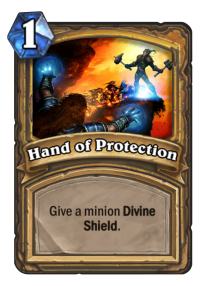 From the original set of keywords that only included basic effects such as Battlecry, Deathrattle, Taunt, Divine Shield, Windfury, Charge, etc., Hearthstone now has a lot of keywords introduced through expansions. Among these are some keywords that are used not only in the set in which it first appeared, but also in subsequent sets, such as Rush or Lifesteal. On the other hand, there are keywords that are only present in one expansion, perhaps because they are relevant only to the content of the expansion itself, or because they are not strong enough/strong enough, or because it is very difficult to set up. Design new cards with that keyword. Examples of this include The Grand Tournament’s Inspire, Rastakhan’s Rumble’s Overkill, or The Boomsday’s Project’s Magnetic. Some keywords are not reused at all, but there are cards in later expansions that use the exact same effect as the tag’s description. For example Echo, although only in The Witchwood, but Witch’s Brew possesses the same effect as this mechanism. However, these keywords are not appearing again meaning we will very rarely see a card with the same effect in the future.
From the original set of keywords that only included basic effects such as Battlecry, Deathrattle, Taunt, Divine Shield, Windfury, Charge, etc., Hearthstone now has a lot of keywords introduced through expansions. Among these are some keywords that are used not only in the set in which it first appeared, but also in subsequent sets, such as Rush or Lifesteal. On the other hand, there are keywords that are only present in one expansion, perhaps because they are relevant only to the content of the expansion itself, or because they are not strong enough/strong enough, or because it is very difficult to set up. Design new cards with that keyword. Examples of this include The Grand Tournament’s Inspire, Rastakhan’s Rumble’s Overkill, or The Boomsday’s Project’s Magnetic. Some keywords are not reused at all, but there are cards in later expansions that use the exact same effect as the tag’s description. For example Echo, although only in The Witchwood, but Witch’s Brew possesses the same effect as this mechanism. However, these keywords are not appearing again meaning we will very rarely see a card with the same effect in the future.
Of course, Blizzard is always trying to design keywords that can be reused in subsequent expansions, rather than limited to a single expansion. To achieve this, the keyword must make matches more interesting, popular with players, and easy to build decks around. Apart from the keywords in the Basic/Classic set, not many keywords are reused in later expansions. Basically, the only three keywords that continue to appear popular are Discover, Lifesteal, and Rush. There are also Dormant (although it is quite rare), and Quest/Sidequest, although they are somewhat like a type of card with completely different mechanics. In order to join Hearthstone’s future pool of “senior” keywords, we’ll need a few new Spellburst cards each year (and even each expansion).
Is Spellburst a good mechanic?
We’ve had some time to test Spellburst and can now say it’s a very good mechanic. It’s not strong enough to be nerfed, but it’s not weak either, and there are quite a few meta decks that use cards with Spellburst.
First let’s talk about the power of Spellburst. This effect is not too difficult to activate, perhaps a bit stronger than Battlecry, on par with Deathrattle. Spellburst activates “faster” than Deathrattle, but the player must use an extra card to activate it. Unless you use a 0 mana Spell, to make sure the Spellburst is activated you will have to wait 1-2 turns and have to use extra mana to play the Spell. In contrast, Deathrattle cards can be played for mana and require no other cards to activate, and in addition, killing Deathrattle minions should not be a problem, as often the strength of Deathrattle minions is the effect. when they die.
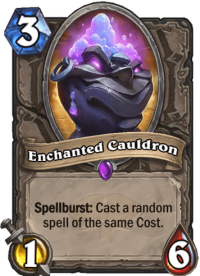
Of the 20 Spellburst cards introduced in Scholomance Academy, 12 were used in the meta. The other few cards have potential as well, but probably not in the current meta. It can be said that there is only one Spellburst card that is bad and will almost certainly not be played in any meta, which is Enchanted Cauldron. However, it should also be said that any expansion pack has a few useless cards that become a meme for the community, and Enchanted Cauldron is simply one of them. Overall, having more than half of the cards with the new mechanics used by players is a huge success for Spellburst, especially since none of those cards are too strong and cause the deck to become unbalanced. The only exception is probably Cabal Acolyte nerfed, but the reason is generally because players hate to see it when meeting a Priest (or rather, any card that helps Priest get their opponent’s cards), not because it’s too strong (although If you find the right steal deck, it’s unlikely that Priest will be at the top of the meta).
In terms of design and the way the Spellburst cards are played, they also have quite a few interesting aspects. Spellburst effects on very simple cards (like Intrepid Initiatea strong and easy card for Aggro decks), to cards that require more complex calculations like Speaker Gidra, Headmaster Kel’Thuzad and special is Pen Flinger. This 1-mana card is popular in Libram Paladin due to its ability to continuously play 0 mana spells to take advantage of Battlecry.
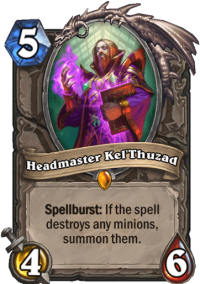 Spellburst’s tactics are perhaps more complex than that of Battlecry’s, although both are only one-time activation effects. The player must save a Spell to activate this effect (or else the opponent has a chance to deal with a minion with an unactivated Spellburst). For example combos Wretched Tutor combined with Apotheosis will both clear the table and heal, or the aforementioned combat is Headmaster Kel’thuzad and Speaker Gidra, both need to be combined with certain Spells. Players always have to consider whether to play “vegan” the minion and let it be at risk of being handled by the opponent, or save it to combine with another Spell. This decision is often not simple, because if the player can lose value, otherwise it will cost in tempo. Some cards also require the right timing to activate Spellburst, the most obvious example being Reaper’s Scythe. Warriors can keep this weapon’s Spellburst until the right time to clear opponent’s monsters, but will not be able to cast cards or summon monsters for several turns until Spellburst is activated (which also forces your opponent to force it). must be carefully calculated to avoid clearing the table). All in all, while this is a fairly simple mechanic, it takes a lot of calculation for the player to use it effectively, unlike Battlecry (the strategy for the Battlecry cards is the Battlecry effect itself, not the way it works. the player activates it).
Spellburst’s tactics are perhaps more complex than that of Battlecry’s, although both are only one-time activation effects. The player must save a Spell to activate this effect (or else the opponent has a chance to deal with a minion with an unactivated Spellburst). For example combos Wretched Tutor combined with Apotheosis will both clear the table and heal, or the aforementioned combat is Headmaster Kel’thuzad and Speaker Gidra, both need to be combined with certain Spells. Players always have to consider whether to play “vegan” the minion and let it be at risk of being handled by the opponent, or save it to combine with another Spell. This decision is often not simple, because if the player can lose value, otherwise it will cost in tempo. Some cards also require the right timing to activate Spellburst, the most obvious example being Reaper’s Scythe. Warriors can keep this weapon’s Spellburst until the right time to clear opponent’s monsters, but will not be able to cast cards or summon monsters for several turns until Spellburst is activated (which also forces your opponent to force it). must be carefully calculated to avoid clearing the table). All in all, while this is a fairly simple mechanic, it takes a lot of calculation for the player to use it effectively, unlike Battlecry (the strategy for the Battlecry cards is the Battlecry effect itself, not the way it works. the player activates it).
Will Spellburst continue to be available in the future?
This is entirely up to the Hearthstone design team, but it can be said that this is a very potential playstyle. It’s simple, isn’t tied to a single theme, and doesn’t interact in particular with the other cards of this expansion. Scholomance Academy has a lot of cheap Spells, including Studies cards. But other expansions also have cheap and powerful Spells, so activating Spellburst won’t be too difficult. Spells are one of the most basic mechanics of the game, and it’s only natural to have a keyword activated when using a Spell.
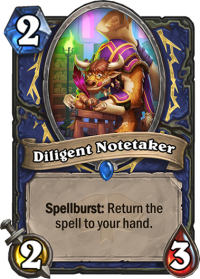 There are many ways to design the Spellburst effect, and so we can expect cards with interesting effects in the next expansions. Most effects require activation in some way, whether it’s Battlecry, Deathrattle, “End of turn” or similar (aura-type effects like Dire Wolf Alpha are quite rare). And activating the effect once by playing a Spell expands creativity when designing new cards, from simple to complex depending on the Blizzard team. Effects similar to those of Speaker Gidra or Headmaster Kel’Thuzad would be difficult to achieve with any keyword other than Spellburst. Even a simple leaf like Diligent Notetaker – it can hardly be replaced by another mechanism.
There are many ways to design the Spellburst effect, and so we can expect cards with interesting effects in the next expansions. Most effects require activation in some way, whether it’s Battlecry, Deathrattle, “End of turn” or similar (aura-type effects like Dire Wolf Alpha are quite rare). And activating the effect once by playing a Spell expands creativity when designing new cards, from simple to complex depending on the Blizzard team. Effects similar to those of Speaker Gidra or Headmaster Kel’Thuzad would be difficult to achieve with any keyword other than Spellburst. Even a simple leaf like Diligent Notetaker – it can hardly be replaced by another mechanism.
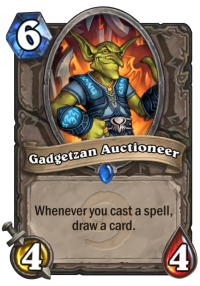 Spellburst is also a great way to add interactions with Spells that the player cannot use over and over again in a match. Spellburst is very simple to activate and only once, the development team can easily tweak the power of the cards that spin this effect. The opposite of this type of effect can be mentioned Gadgetzan Auctioneer, where its effect is repeated over and over again. Designing cards like this is difficult to balance as they can be either too strong or too weak. They need to be designed to be strongest when the effect is activated 2-3 times, and are useless in decks that can’t do this. Spellburst cards, on the other hand, can be found in decks with only a few ways to activate, for example Pen Flinger in Zoolock or Intrepid Initiate in Aggro Demon Hunter. These two decks don’t play a lot of Spells, but are enough to trigger Spellburst in most cases. A good deck building will make this effect even stronger, but the player doesn’t need to put in too much effort to get one of these cards to work optimally, as in most cases Spellburst is a great effect anyway. support effect, not a win-lose effect with just one card.
Spellburst is also a great way to add interactions with Spells that the player cannot use over and over again in a match. Spellburst is very simple to activate and only once, the development team can easily tweak the power of the cards that spin this effect. The opposite of this type of effect can be mentioned Gadgetzan Auctioneer, where its effect is repeated over and over again. Designing cards like this is difficult to balance as they can be either too strong or too weak. They need to be designed to be strongest when the effect is activated 2-3 times, and are useless in decks that can’t do this. Spellburst cards, on the other hand, can be found in decks with only a few ways to activate, for example Pen Flinger in Zoolock or Intrepid Initiate in Aggro Demon Hunter. These two decks don’t play a lot of Spells, but are enough to trigger Spellburst in most cases. A good deck building will make this effect even stronger, but the player doesn’t need to put in too much effort to get one of these cards to work optimally, as in most cases Spellburst is a great effect anyway. support effect, not a win-lose effect with just one card.
And finally, although this is not the deciding factor, many players still appreciate this mechanism. Needless to say, this is also one of the reasons that Discover has become so popular, because it was liked by many people when it first launched. It’s been somewhat abused in recent expansions, but that’s another story.
Conclusion
All in all, Spellburst has great potential for future use, or at least the design team will most likely continue to develop Spellburst cards in the next 1-2 expansions before a decision is made. final determination. Unlike other keywords like Echo and Magnetic, which have balance problems or are tied to a single expansion, Spellburst meets all the requirements to be able to reappear. Of course, that doesn’t guarantee it will become a popular keyword (such as Rush), but it is likely that this will be something the design team considers and also what many players want. .
How do you rate Spellburst? Would you like to see it reappear in the next expansions? Are there any keywords you’d like to see in the next expansions – Overkill, Twinspell, Reborn?
You can read related articles here:
Source link: Can Spellburst be used in the next Hearthstone expansions
– https://emergenceingames.com/
